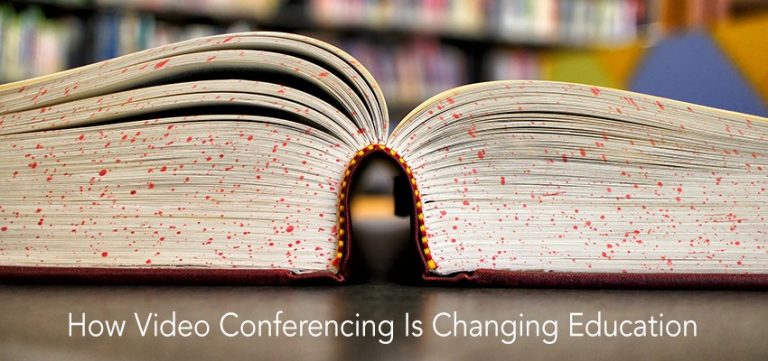How Video Conferencing Is Changing Education
Education today is rapidly evolving and changing in order to keep pace with technological advancements and emerging teaching practices. By utilizing tools like video conferencing, educators are able to shrink geographical barriers and expand interaction potential by connecting students to other educators, students or experts regardless of location.
Here are some of the most notable ways that video technology has changed the world of education.
1. Collaboration with experts
Traditionally, students have been limited to the classroom and any resources they might have. However, with video conferencing, these resources are greatly expanded. With video collaboration technology, experts and other educators outside of the classroom can connect virtually to students and share expertise and experience regardless of location. This type of distance learning allows students to participate in new cultural and learning experiences that they may not have encountered in a traditional classroom. For example, rather than sitting and listening to a lecture on planets, via video conferencing, students can interact with astronauts or NASA representatives to learn about space. Students are able to interact with these experts in real-time, and reap the benefits of virtual “hands-on” experience in many different environments that they would normally not have the ability to encounter. The opportunities for this type of collaboration using video conferencing is limitless and will continue to expand learning abilities worldwide.
2. Virtual field trips
Due to many school districts experience drastic budget cuts and increasing academic standards, some schools have started limiting the amount of off campus field trips they are able to take. Similarly, some locations that educators would like students to experience are not geographically feasible. Using video conferencing for virtual field trips, students are given the opportunity to “travel” to locations that they normally wouldn’t be able to due to these budget or distance obstacles. It gives students the opportunity to have experiences that they wouldn’t normally be able to participate in and it gives educators the ability to take an ordinary subject and turn it in to an interactive teaching experience. Rural schools in particular can benefit from this use of technology by giving students the same encounters that their peers in larger cities are able to experience. The use of visual collaboration technology for virtual field trips can lead to significant cost savings, reduced liability, and the ability to participate in more field trips throughout the school year.
3. Connect with other schools
Another great use of video collaboration in schools is virtually connecting schools together. Bringing students together from different locations to interact with each other allows students to gain insights and another perspective from their peers, regardless of where the other school is located. It can help teach students how to collaborate and work together with people who may be different than them and teaches students a new kind of interaction that can help to enhance their interpersonal communication skills. Use of video conferencing to connect students can expose them to different types of classroom topics, challenges, and insights that they wouldn’t normally experience.
4. Personalized learning
With video conferencing technology, teachers can have more one-on-one interactions with students and adjust lessons plans accordingly to the needs of either an individual student or an entire classroom. It also allows teachers to interact with students outside of the classroom. If a student in unable to attend school due to some sort of medical emergency or any other kind of issue, a teacher can use video conferencing technology to keep a student up to date on classroom activity and assignments so the student does not fall behind. Not only does this benefit the student, but it also keeps the teacher connected to the class and each individual student.
5. Training and education for educators
On the administrative side, schools and districts can use video conferencing to efficiently conduct on-going education, training, and seminars without losing teaching time due to travel. Districts can also use video conferencing to connect with other district educators to share expertise and ideas with fellow colleagues. However, for technology to be truly effective, teachers and administrators need to be trained and educated on these tools. If schools are able to successfully implement video conferencing technology , distance learning can help diversify the classroom experience, reduce administrative costs, and provide endless amounts of newly discovered resources.



